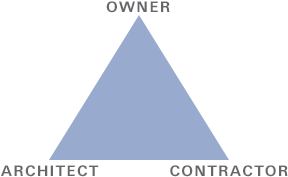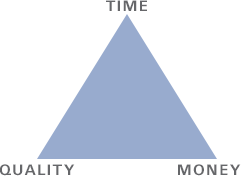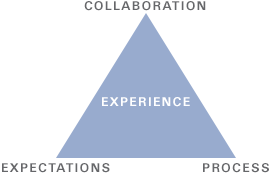
Design Philosophy
Critical Romance:
IT HAS BEEN STATED FORM FOLLOWS FUNCTION,
and then again, that Function follows Form.
These two famous sayings each present an opposing thesis governing the design process, and throughout history, proponents have argued passionately for one or the other in this debate between head and heart.
Although both statements provide a simple, reductive formula to follow, each negates the other. A more conciliatory approach providing for a unity of form and function is needed, one with neither the head nor the heart subjugated.
To describe this equal appreciation of form and function, we have created a design theory entitled Critical Romance.
It is our mission to rigorously study and satisfy both the functional and formal criteria presented by each project.
With this theory of Critical Romance, we endeavor to create timeless, beautiful works of architecture and design that satisfy complex programs and transcend stylistic categorization.
FORM AND FUNCTION, INDIVISIBLE.
Management Philosophy

COLLABORATION IS THE FIRST COMPONENT OF SUCCESSFUL MANAGEMENT. All projects require clients to commission work, architects to design projects, and contractors to build them. Abstracted, this is known as the owner, architect, contractor triangle.
Throughout the design process, the architect’s role is to assist the owner in evaluating options, visualizing space, and translating the aesthetic and functional programs through design. The architect then produces definitive, complete plans and specifications from which the owner’s contractor can accurately bid the work and prepare for construction. The contractor’s responsibility is to professionally oversee the construction of the project. With proper planning, surprises can be minimized; and with the owner, architect, and contractor all collaborating, projects adhere to schedules and budget without aesthetic compromise.

THE SECOND COMPONENT OF SUCCESSFUL MANAGEMENT calls for the establishment of appropriate expectations. A second triangle of expectations consisting of time, quality, and money emerges.
Embracing realism and establishing priorities fosters attainable expectations. It can be stipulated that two but not all three of the time, quality and money criteria may be predictably satisfied within any project. If a project needs to be delivered quickly and is extensive in scope or quality requirements, increased costs should be expected. Similarly, if quality and economic rigor are most important, the project may take longer than expected. If a project has a tight schedule and a tight budget, quality will suffer.
THE THIRD COMPONENT NECESSARY TO PROJECT SUCCESS is process management. Creating and developing these systems over time provides for dependable, repeatable, and smooth projects. In addition to traditional systems such as computers and libraries, identifiable phases are essential to well managed projects. The following nine phases represent the typical services provided by Daniel Frisch Architect, PC.
From programming and schematic design to the punchlist at the conclusion of construction, one phase builds upon the previous, ensuring the delivery of a well-planned project.
PROGRAMMING > SURVEY > SCHEMATIC DESIGN > DESIGN DEVELOPMENT > CONSTRUCTION DOCUMENTS > BIDDING > APPROVALS > CONSTRUCTION ADMINISTRATION > SIGN-OFFS

EXPERIENCE IS THE FINAL AND MOST IMPORTANT INGREDIENT. Taken together, collaboration, expectations and process form a management blueprint, but it is experience that provides for the realization of successful projects.
In the final triangle, the word experience
has been added in the center of the diagram to signify that all discussions of management revolve around the experience and expertise of the management team. Daniel Frisch Architect, PC has the management experience necessary to create and oversee successful projects.
